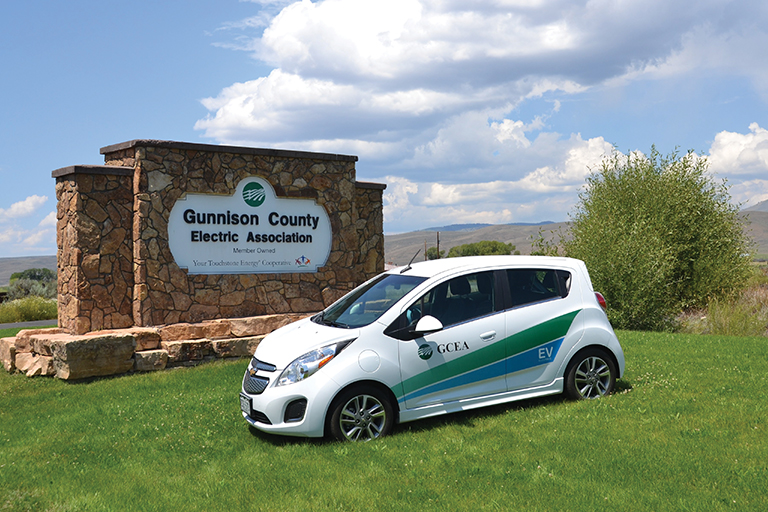By Kent Singer, CREA Executive Director
Former U.S. Supreme Court Justice Louis Brandeis once commented that state governments are the “laboratories of democracy.” He was referring to the fact that each of the 50 states is free to adopt different policies to see how they work without impacting the rest of the country. If an idea is successful, it may be implemented in other states.
Similarly, Colorado’s electric co-ops are “laboratories of technology.” Many of our members are trying new approaches to providing electricity and other services, and they are deploying new technology at a dizzying pace.
A couple years ago, the Colorado Rural Electric Association produced a video that highlighted some of the innovative projects initiated by electric co-ops across the state. Those projects included community solar arrays, small hydropower projects, coal mine methane, biomass plants and utility-scale wind and solar. Even though that video is just two years old, it’s already out of date in terms of adequately depicting the continuing explosion of electric co-op ingenuity and innovation all over Colorado. In 2017, Colorado’s electric co-ops will continue to push the envelope when it comes to integrating distributed generation resources and developing policies and technologies that benefit their member-owners.
In central Colorado, Gunnison County Electric Association is leading the charge (pun intended) when it comes to enabling the use of electric or hybrid electric vehicles. GCEA installed, with the help of a grant from the Colorado Energy Office, electric car battery chargers in Gunnison, Crested Butte and Lake City. Electric car owners can plug into the chargers at no cost and recharge their batteries.
For the last several years, GCEA also incorporated electric cars into its fleet and provided its members with an opportunity to drive an electric car at its summer annual meeting. GCEA is looking ahead to a future where more electric cars are on the road and is doing its part to facilitate these technologies.
Another hot topic in the electricity world is energy storage. Every year at its Energy Innovations Summit, CREA presents a panel of experts talking about the latest developments in storage technology and how those technologies will impact utility operations in the future. This year, several electric co-ops have plans to develop pilot projects to examine electricity storage.
Poudre Valley Rural Electric Association was awarded a grant from the National Rural Electric Cooperative Association to test various technologies, including battery storage, as part of a two-year study of energy services that would benefit co-op member-owners. PVREA will examine not only storage, but also energy-efficient lighting technologies, geothermal energy and new solar technology.
Of course, the continuing decline in the costs of solar power also affects the decisions of Colorado’s co-ops. In addition to the increasing penetration of customer-sited solar, many larger, utility-scale projects are also being added by co-ops. Intermountain Rural Electric Association recently energized a 13-megawatt utility-scale solar project in its service territory. Tri-State Generation and Transmission Association, the power supplier for 18 of Colorado’s 22 co-ops, also bet big on solar. In addition to a 30-MW project in northern New Mexico, another 30-MW solar farm in Las Animas County is providing electricity to Tri-State members.
This year, six electric co-ops (Highline, Y-W, Mountain Parks, K.C., Mountain View and Morgan County) will work with the Rocky Mountain Institute to aggregate their systems in a solar offering to vendors in the 10- to 15-MW range. RMI will issue requests for proposals this spring, and a vendor will be selected later this year. The expectation is that the large solar arrays will be integrated into the co-op distribution systems and online by late 2018.
Grand Valley Power was the first co-op in Colorado to build a community solar array specifically intended to help low-income co-op members. Working with a nonprofit called GRID Alternatives, Grand Valley energized its first array back in 2015 and is now helping its members save on their electric bills with carbon-free electricity. Last year, five more Colorado co-ops (Delta-Montrose, Gunnison County, Holy Cross, San Miguel Power and Yampa Valley) also worked with GRID Alternatives to build community solar in their service territories.
Electric co-op innovation in Colorado is not limited to energy production. Recognizing a need in many parts of rural Colorado for access to high-speed internet, several co-ops founded telecommunications subsidiaries to meet the needs of their members. Southeast Colorado Power, San Luis Valley, Delta-Montrose and La Plata are all providing broadband services to enhance the quality of life in their communities. Several other co-ops are engaged in feasibility studies to see if they, too, should provide telecom services to their members.
Solar, wind, biomass, hydropower, energy efficiency, energy storage, automated meters, broadband: Colorado’s electric co-ops are embracing new technologies and services at an unprecedented rate. We have been leaders in technology and innovation for over 75 years, and we’ll continue to find ways to provide value and service to our members in the years ahead.

